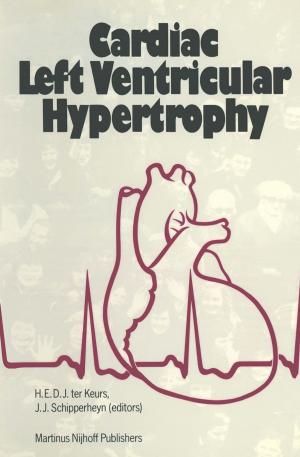The Biology of Subcellular Nitric Oxide
Nonfiction, Science & Nature, Science, Other Sciences, Molecular Biology, Biological Sciences, Biochemistry, Health & Well Being, Medical| Author: | Tamás Rőszer | ISBN: | 9789400728196 |
| Publisher: | Springer Netherlands | Publication: | January 14, 2012 |
| Imprint: | Springer | Language: | English |
| Author: | Tamás Rőszer |
| ISBN: | 9789400728196 |
| Publisher: | Springer Netherlands |
| Publication: | January 14, 2012 |
| Imprint: | Springer |
| Language: | English |
This book fills in a gap in the NO literature. Recent progress in the field of NO-biology shows that NO is generated within distinct cell compartments, including specific plasma membrane regions, mitochondria, chloroplasts, peroxisomes, the Golgi-complex and intracellular membrane systems. NO synthesis plays specific roles in these compartments and, in turn, cell organelles also control intracellular NO levels. This monograph focuses on the roles played by the subcellular NO-signaling microdomains in the prokaryote-, fungus-, plant- and animal cells and shows how NO behaves as an intracellular signal in distinct cellular environments. This monograph also provides a summary of our knowledge on how NO synthesis came through evolution to be associated with organelles and subcellular compartments. Promotes the novel ideas that some functions of NO and its associations with subcellular units have been conserved during the evolution of the cell. A special chapter is dedicated to the biomedical relevance of subcellular NO synthesis, and this chapter also discusses the evidence that altered compartmentalization of NO-producing enzymes causes disease.
This book fills in a gap in the NO literature. Recent progress in the field of NO-biology shows that NO is generated within distinct cell compartments, including specific plasma membrane regions, mitochondria, chloroplasts, peroxisomes, the Golgi-complex and intracellular membrane systems. NO synthesis plays specific roles in these compartments and, in turn, cell organelles also control intracellular NO levels. This monograph focuses on the roles played by the subcellular NO-signaling microdomains in the prokaryote-, fungus-, plant- and animal cells and shows how NO behaves as an intracellular signal in distinct cellular environments. This monograph also provides a summary of our knowledge on how NO synthesis came through evolution to be associated with organelles and subcellular compartments. Promotes the novel ideas that some functions of NO and its associations with subcellular units have been conserved during the evolution of the cell. A special chapter is dedicated to the biomedical relevance of subcellular NO synthesis, and this chapter also discusses the evidence that altered compartmentalization of NO-producing enzymes causes disease.















